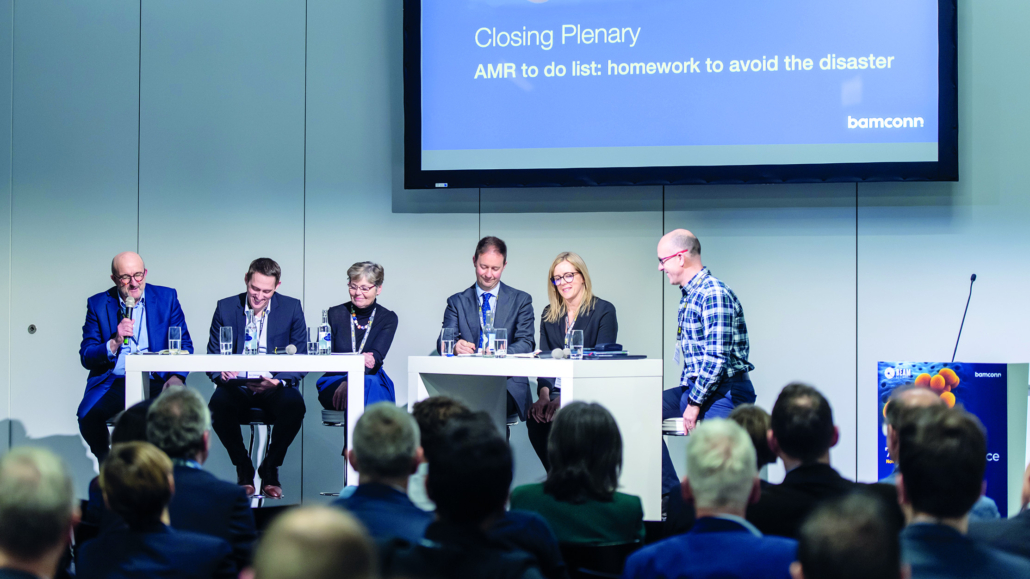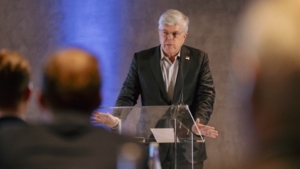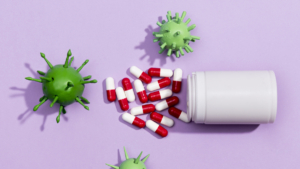
Progress in the fight against AMR
How to stop the silent pandemic AMR was discussed by 500 experts from 13 countries at the 7th AMR Conference in Basel. At that time, in Brussels, there were two proposals on the table on how to compensate novel resistance-breaking antimicrobials, from which one got the green light in the new pharma legislation.
That antimicrobial resistance can no longer be considered a silent pandemic became abundantly clear at the AMR Conference in Basel March 16-17. Unlike the rich G7 countries, resource-poor regions such as India and Africa already have a glimpse at AMR’s future – much like with climate change. Experts at the conference stressed that 30-50% of deaths here are already due to drug-resistant hospital-acquired pathogens – 70% of which are Gram-negative. According to the 85 international speakers, Africa and India currently account for more than 75% of annual AMR-related deaths (see interview p. 10, European Biotechnology Magazine Summer Edition 2023). At the same time, access to low-cost agents that have already been tested in children is limited, and appropriate use of antibiotics, for example, is still a major challenge in India and Africa.
See the future in India
The 7th AMR conference, sponsored by the BEAM Alliance and organised by bamconn GmbH, thus focused on India as an AMR hotspot in a separate session. India has the largest population in the world, and we need solutions born in India, Anand Anandkumar (Bugworks) emphasised to the 500 professional visitors at the conference. Because some of the pathogens there have developed unique resistance mechanisms, diagnostics and anti-infectives developed by SMEs in the even less affected industrialised countries are of little help.
Reason enough, said David Paterson of the National University of Singapore, to test agents adapted specifically to Asian populations with meaningful study endpoints such as 28d mortality, clinical cure and nephrotoxicity. Recently, about US$60m have been allocated locally for Phase II to IV clinical trials under the ADvance-ID programme, which also manufactures the compounds for the trials. Clinical trials are important because recent data show that there is no correlation between preclinical data and clinical success of agents against carbapenem-resistant pathogens, Paterson added.
Globally, the drug cushion against drug-resistant microbial priority pathogens is still not comfortable: Since 1980, only three new classes of compounds have been discovered and developed, warned AMR expert John Rex, who, as CMO of UK-based F2G Ltd, is now taking his earlier research into fungicides, antibiotics and antivirals for Big Pharma, which has largely dropped out of development, forward in an SME. Five or six years ago, nobody would have believed that all G7 would be at the AMR conference. Now, it is reality: we have gone so far, Rex said. Nonetheless, drug discovery urgently needs more funding and, most importantly, appropriate new legislation to enable modern trial designs and endpoints to effectively counter AMR, according to Rex, and Marlieke de Kraker who is assessing the burden of drug-resistant bacterial infections as part of the PrIMAVeRa project under the Innovative Medicines Initiative’s AMR Accelerator. Anders Karlén also highlighted these financial and legislative needs when presenting the new ENABLE-2 funding programme.
Funding currently primarily includes PUSH initiatives, with initiatives such as the Novo REPAIR Impact Fund and CARB-X advancing preclinical and GARDP, BARDA, IMI and the AMR Action Fund advancing clinical testing of innovative drug candidates, such as phage-based or microbiome-modulatory candidates, and diagnostic approaches, as well as information dissemination to curb the increasing AMR pandemic. ERA-invest also plans to provide fresh money in May. But PULL initiatives, as already launched in the UK, Japan, or those under discussion for the EU, are urgently needed to give developers a return on investment and thus incentives to innovate.
We need to transfer the progress we made during the pandemic into progress in the AMR field, emphasised Alexandra Cameron of the WHO. Particularly in financing, we made good progress from initially national funding to more and more international funding approaches, she added. In addition to privately funded initiatives, there is agreement that governments must also provide public funding, added Ralf Sudbrak of the Global AMR R&D Hub. There is also a need to bridge the gap between academic research and business, said Douglas Haggstrom of INCATE. Marc Gitzinger, CEO of Swiss-based BioVersys AG and Chairman of the BEAM Alliance, called for improved communication on AMR, saying that in light of the coronary pandemic, the topic has been pushed into the background. He stressed that the biggest task for the BEAM Alliance is the implementation of measures that bring the field forward in Brussels .
Highlights of the conference for SMEs were the partnering sessions with around 450 meetings of potential new partners and investors such as the Boehringer Ingelheim Venture Fund, who presented its portfolio companies in a separate session, and the presentations of eleven selected start-ups in the Pitch Contest. The Pitch Award, supported by INCATE and sponsored by Vossius with €10,000, was won by the University of Southampton spin-out iFast Diagnostics. It offers an AMR susceptibility test that takes between four and eight hours and measures the electrical properties of specific bacteria in a low-cost microfluidic chip: the Brits plan to launch the product in late 2024. The next edition of the AMR Conference will be held at the Congress Center Basel on March 6-7, 2024.


 CARB-X
CARB-X Image by freepik
Image by freepik